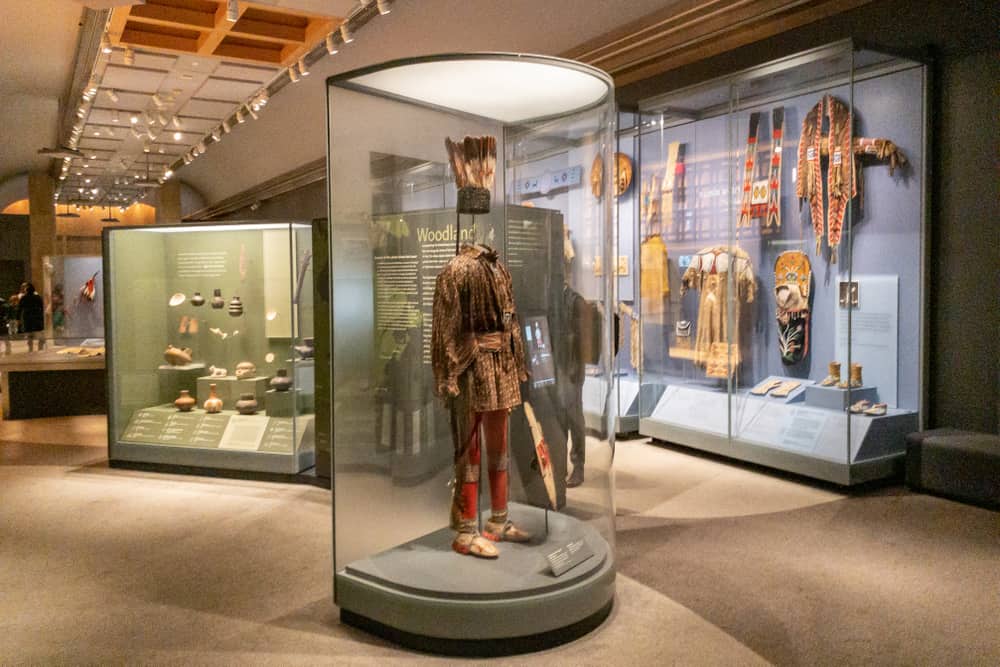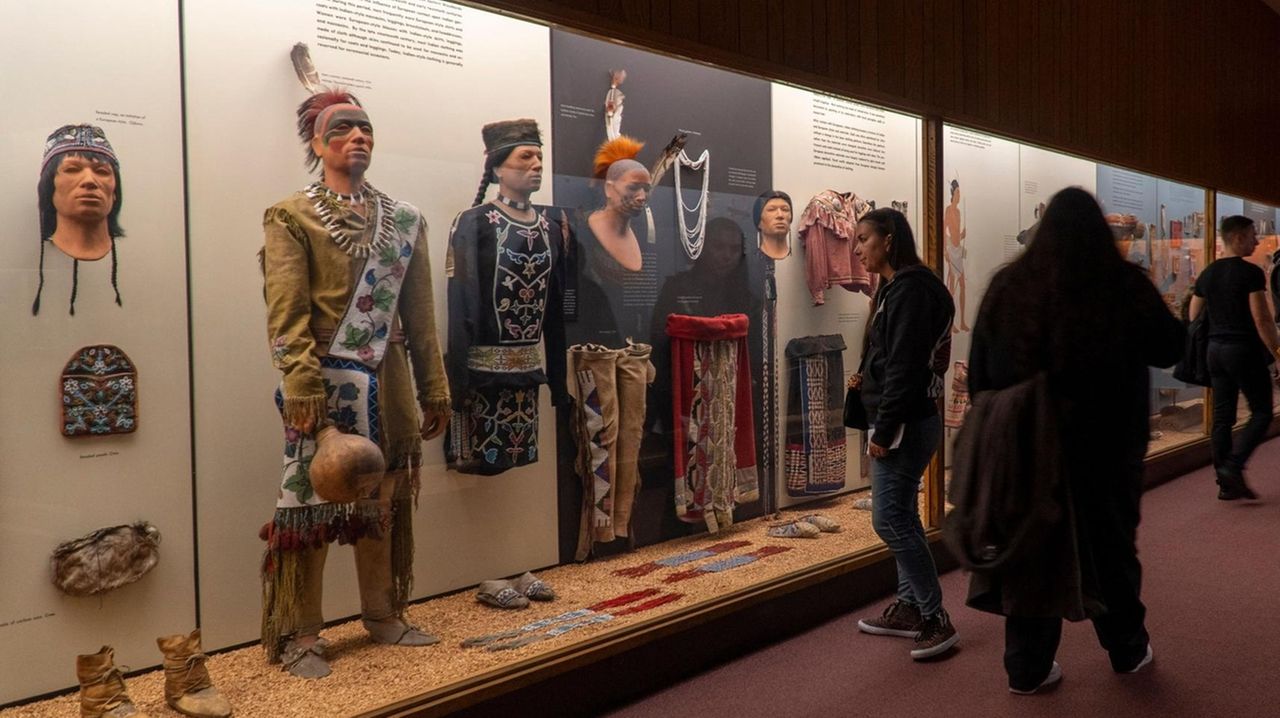
Native American Museum Discounts for Students: A Comprehensive Analysis of Access, Education, and Cultural Stewardship
Abstract: Native American museums and cultural centers play an indispensable role in preserving, interpreting, and presenting Indigenous histories, cultures, and contemporary realities. Student discounts at these institutions are not merely a financial incentive; they represent a strategic and ethical imperative aimed at fostering educational attainment, promoting cultural understanding, and advancing the principles of decolonization and reconciliation. This article provides an in-depth examination of the rationale, mechanisms, benefits, and challenges associated with student discount policies at Native American museums, framing them within a broader discussion of equitable access to cultural heritage and the critical role of education in shaping informed global citizens.
Keywords: Native American museums, student discounts, cultural education, access, decolonization, Indigenous studies, museum pedagogy, equity, cultural stewardship.
1. Introduction: The Unique Mandate of Native American Museums

Native American museums and cultural centers are distinct from conventional ethnographic or anthropological museums in their foundational mission and epistemological approach. They are often tribally-operated, community-driven, or explicitly committed to presenting Indigenous narratives from an Indigenous perspective, actively challenging historical misrepresentations, stereotypes, and colonial interpretations of history. These institutions serve as vital repositories of cultural patrimony, centers for language revitalization, platforms for contemporary artistic expression, and spaces for intergenerational knowledge transfer. Their educational mandate extends beyond mere exhibition; it encompasses the active engagement of diverse audiences in critical dialogues about history, sovereignty, environmental stewardship, and human rights.
In this context, student discounts emerge as a crucial mechanism to facilitate access for a demographic that is both highly receptive to learning and often financially constrained. By reducing economic barriers, these policies aim to integrate Indigenous perspectives into mainstream education, cultivate empathy, and inspire future generations to engage with and contribute to cultural preservation and advocacy.
2. The Rationale for Student Discounts: A Multifaceted Imperative
The implementation of student discounts at Native American museums is driven by several interconnected educational, economic, and ethical considerations.
2.1. Educational Imperative and Curriculum Enhancement:
Museums are informal learning environments that offer unique pedagogical opportunities. For students, Native American museums provide invaluable access to primary sources, material culture, and direct narratives that often complement or challenge conventional classroom teachings. Discounts encourage students from K-12 through graduate school to engage with these resources, fostering a deeper understanding of:
- Diverse Histories: Moving beyond Eurocentric narratives to appreciate the complexity and richness of Indigenous civilizations, their contributions, and their enduring resilience.
- Cultural Diversity: Exposure to the vast array of Native American nations, languages, artistic traditions, and spiritual practices, countering monolithic perceptions.
- Contemporary Issues: Learning about current challenges faced by Indigenous communities, such as land rights, environmental justice, health disparities, and cultural appropriation, thereby promoting critical thinking and civic engagement.
- Indigenous Knowledge Systems: Gaining insight into traditional ecological knowledge, governance structures, and philosophical frameworks that offer alternative perspectives on global challenges.
By making these experiences more accessible, museums directly support formal education curricula, enriching learning outcomes and promoting a more comprehensive and nuanced understanding of American history and global Indigenous issues.
2.2. Economic Accessibility and Equity:
Students, particularly those pursuing higher education, often operate on limited budgets. The cost of museum admission can be a significant barrier, especially for repeat visits or for students from lower socioeconomic backgrounds. Student discounts address this financial hurdle, ensuring that economic status does not preclude access to essential cultural and educational resources. This commitment to equitable access aligns with broader principles of social justice, recognizing that cultural institutions have a responsibility to serve all segments of society, irrespective of their financial capacity. By democratizing access, museums ensure that the educational benefits of engaging with Indigenous cultures are available to a wider and more diverse student population.
2.3. Fostering Future Engagement and Cultural Stewardship:
Introducing students to Native American museums at an early age or during their formative educational years can cultivate a lifelong appreciation for Indigenous cultures and histories. These early encounters can:
- Inspire Future Generations: Encourage students to pursue careers in museum studies, anthropology, history, Indigenous studies, cultural preservation, or advocacy for Indigenous rights.
- Cultivate Lifelong Learners: Develop a habit of museum visitation and a curiosity for continuous learning about cultural heritage.
- Build Future Audiences and Supporters: Nurture a new generation of museum patrons, volunteers, and donors who understand and value the mission of these institutions.
- Promote Intergenerational Dialogue: Facilitate conversations between students and museum educators, elders, and community members, fostering mutual respect and understanding.
2.4. Decolonization and Reconciliation:
Student discounts serve as a practical step towards decolonization by making Indigenous knowledge and perspectives broadly accessible, particularly to the dominant society that has historically marginalized them. Engaging students with authentic Indigenous voices and narratives challenges colonial legacies of erasure and misrepresentation. This educational exposure is crucial for reconciliation efforts, fostering an informed public capable of understanding past injustices and supporting contemporary Indigenous self-determination and cultural revitalization. It positions students as active participants in building a more just and inclusive future.
3. Mechanisms and Types of Student Discounts
Native American museums employ various strategies to offer student discounts, reflecting their institutional policies, funding models, and target demographics.
3.1. Direct Admission Discounts:
The most common form is a reduced admission fee for students. This can be a fixed percentage off the standard adult ticket price (e.g., 20-50% off) or a set, lower price. Eligibility typically requires the presentation of a valid student identification card from an accredited educational institution. Policies often differentiate between K-12 students, who may receive free or heavily discounted admission (especially for school groups), and university-level students.
3.2. Free Admission Initiatives:
Some Native American museums, particularly federal institutions like the Smithsonian National Museum of the American Indian (NMAI) in Washington D.C. and New York, offer free general admission to all visitors, including students. This model completely eliminates financial barriers, making the museum highly accessible. Other institutions may offer specific free student days, "community access" days, or participate in programs like "Museums for All," which provides free or reduced admission to SNAP benefit recipients, often including student populations.
3.3. Student Memberships:
Many museums offer specialized student membership tiers at a reduced annual rate. These memberships often include benefits beyond free general admission, such as discounts on gift shop purchases, special exhibition access, invitations to member-only events, and opportunities for volunteerism or internships. This encourages deeper engagement and a sense of belonging among student visitors.
3.4. Reciprocal Programs and Partnerships:
Native American museums may participate in reciprocal museum programs (e.g., North American Reciprocal Museum (NARM) Association, Reciprocal Organization of Associated Museums (ROAM)) where members of one participating museum receive free or discounted admission at others. While primarily for members, some institutions extend benefits to students from partner universities or local consortia. Furthermore, direct partnerships with local schools and universities often lead to customized programs, free class visits, or student volunteer opportunities.
3.5. Group Visits and Educational Programs:
Museums frequently offer heavily discounted or free admission for organized school groups, often accompanied by tailored educational programs, guided tours, and workshop activities aligned with curriculum standards. These programs are vital for reaching large numbers of K-12 students and providing structured learning experiences.
4. Case Studies and Exemplary Institutions
- Smithsonian National Museum of the American Indian (NMAI): As a federal institution, NMAI offers free admission to all visitors at its Washington D.C. and New York City locations. This commitment to open access ensures that students, regardless of their financial situation, can readily engage with its comprehensive collections and exhibitions. NMAI also provides extensive online educational resources and programs tailored for students and educators.
- Heard Museum (Phoenix, Arizona): Renowned for its collections of Native American art and culture, the Heard Museum offers specific student admission rates, requiring a valid student ID. They also have robust educational programs for K-12 and university students, demonstrating a clear commitment to student engagement.
- Gilcrease Museum (Tulsa, Oklahoma): While the Gilcrease Museum is currently undergoing a major renovation, its historical commitment to showcasing American art and culture, with a strong emphasis on Native American art, has included discounted rates for students and extensive educational outreach programs for school groups.
- Institute of American Indian Arts (IAIA) Museum of Contemporary Native Arts (MoCNA) (Santa Fe, New Mexico): As part of the only four-year degree-granting institution for contemporary Native American arts, MoCNA often offers free or discounted admission to students, especially those from IAIA and other local educational institutions, fostering an environment of artistic and cultural exchange.
These examples illustrate the diverse approaches museums take, from universal free access to targeted discounts and comprehensive educational programming, all aimed at prioritizing student engagement.
5. Challenges and Considerations
Despite the clear benefits, implementing and sustaining student discount policies present several challenges for Native American museums.
5.1. Funding and Sustainability:
Reduced admission fees directly impact earned revenue, which can be critical for operational costs, exhibition development, and collection care. Museums must balance their educational mission with financial sustainability, often relying on grants, endowments, and philanthropic support to offset potential revenue losses from student discounts.
5.2. Awareness and Outreach:
Effectively communicating discount policies and educational offerings to student populations requires targeted marketing and outreach strategies. Many students may not be aware of the availability of discounts or the relevance of Native American museums to their studies and personal growth. Digital marketing, social media campaigns, and partnerships with university student affairs offices are crucial.
5.3. Eligibility and Verification:
Defining "student" can sometimes be complex, particularly for international students, online learners, or those pursuing non-traditional educational paths. Robust but flexible verification processes (e.g., valid student ID, proof of enrollment) are necessary to prevent misuse while remaining inclusive.
5.4. Digital Divide and Accessibility:
While many museums offer online ticketing, ensuring that all students, especially those from underserved communities, have access to the internet and digital information about discounts remains a consideration. Physical accessibility to museum sites also needs to be continually addressed.
6. Future Directions and Recommendations
To maximize the impact of student discounts and further enhance student engagement, Native American museums can consider:
- Strengthening University Partnerships: Developing formal agreements with universities for curriculum integration, joint research projects, internship opportunities, and specialized student access programs.
- Enhanced Digital Engagement: Investing in digital resources, virtual tours, and online educational platforms that complement physical visits and extend accessibility beyond geographical limitations.
- Targeted Outreach to Indigenous Students: Creating specific programs and outreach efforts to encourage Indigenous students to visit and engage with their cultural heritage in museum settings, potentially offering mentorship opportunities.
- Data Collection and Impact Assessment: Regularly evaluating the effectiveness of student discount programs through visitor surveys, educational outcomes, and attendance data to inform future policy decisions and demonstrate impact to funders.
- Advocacy for Funding: Actively seeking grants and philanthropic support specifically designated for student access programs and educational initiatives.
7. Conclusion
Student discounts at Native American museums are more than a mere financial concession; they are a profound statement of commitment to education, equity, and cultural stewardship. By strategically lowering economic barriers, these institutions empower students to engage directly with authentic Indigenous voices, histories, and contemporary experiences. This engagement is crucial for challenging historical biases, fostering empathy, inspiring future generations of cultural advocates, and advancing the vital work of decolonization and reconciliation. As Native American museums continue to evolve as dynamic centers of learning and community, their dedication to student access remains an indispensable component of their mission to build a more informed, just, and culturally understanding society.



